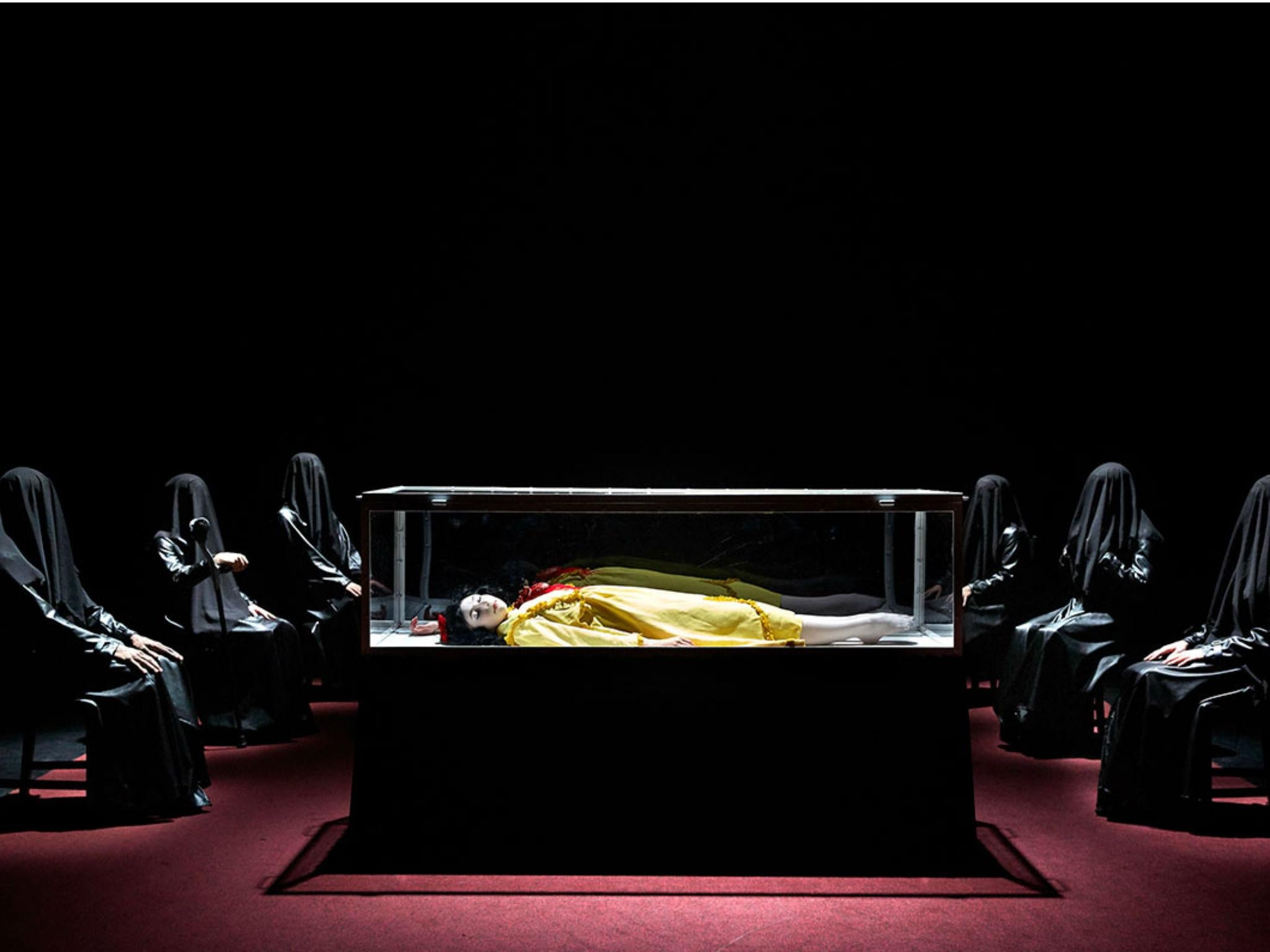Arthur Pita & Headspacedance, Stepmother/Stepfather, The Place, London, review: No doubt it will disturb as many audience members as it delights
Arthur Pita choreographs an unnerving double bill that twists fairy tales into hellish dimensions

Your support helps us to tell the story
From reproductive rights to climate change to Big Tech, The Independent is on the ground when the story is developing. Whether it's investigating the financials of Elon Musk's pro-Trump PAC or producing our latest documentary, 'The A Word', which shines a light on the American women fighting for reproductive rights, we know how important it is to parse out the facts from the messaging.
At such a critical moment in US history, we need reporters on the ground. Your donation allows us to keep sending journalists to speak to both sides of the story.
The Independent is trusted by Americans across the entire political spectrum. And unlike many other quality news outlets, we choose not to lock Americans out of our reporting and analysis with paywalls. We believe quality journalism should be available to everyone, paid for by those who can afford it.
Your support makes all the difference.Happily Ever After? Arthur Pita’s Stepmother/Stepfather revels in fairy-tale horrors and true-crime to create an unforgettable theatrical experience.
Fairy-tales and dance are natural companions: the fantasy inherent to both giving us 19th-century ballets such as The Sleeping Beauty and Pina Bausch’s postmodern, feminist Bluebeard.
Where Disney might sanitise, Arthur Pita’s revisionist imagination unpacks: through irony and exaggeration Pita’s new work Stepmother/Stepfather exploits the original darkness of archetypical fairy-tales, puncturing the idea of ‘happily ever after’. And yet, Stepmother/Stepfather is not a cautionary tale. Instead it celebrates our primal curiosity in violence, sexuality, and death creating an unnerving double-bill that will no doubt disturb as many audience members as it delights.
Stepmother begins with six veiled figures keeping vigil around Snow White’s glass coffin. Once revived, Corey Claire Annand embodies multiple fairy-tale maidens: Snow White becomes Rapunzel, Little Red Riding Hood transforms into Cinderella. Annand’s childish passivity (building on her role in 2016’s The Little Match Girl) is refined to such an extent she becomes almost transparent. Each incarnation ends in abuse or worse at the hands of six stepmothers, performed by male and female dancers, their supernatural evil magnified by swirling leather coats crinkling like reptilian skin as they pace the stage.
Stepmother’s strongest moment comes during Christopher Akrill’s bewitching final solo. His movements full of yearning as he opens his coat to reveal a body both masculine – emphasised by a nude body stocking – and feminine, with him wearing strappy stilettos. The gender fluidity of Stepmother is vital; without this shifting ambiguity Pita’s narrative would be reductive. Instead, both concepts of gender and boundaries between victim and perpetrator blur as Akrill’s stepmother eats Snow White’s heart, wears her dress and, finally, takes her place in the glass coffin.
Stepfather’s shift in time and setting to 19th-century rural America uses Violent Femmes’ “Country Death Song” as inspiration. This raw and frenzied music describes a father pushing his daughter down a well, then committing suicide. Pita’s interpretation adds a quasi-incestuous motive, whilst embodying the song’s unbearable loneliness. Characters are dragged on and off stage under a burlap sack, while glitter curtains, sleazy saloons and a rhinestone cowboy lend a surreal glamour. The principal dancers are outstanding: Clemmie Sveaas’ as the precociously sexual daughter, and Karl Fagerlund Brekke, the red-eyed, red-neck stepfather Eugene. In their final duet Eugene hangs from a twisting noose while his drowned daughter clings to him from below; it is an image at once harrowing and poetic, of suffering made spectacle. This is an unforgiving theatrical experience – and essential viewing for anyone interested dance.
Join our commenting forum
Join thought-provoking conversations, follow other Independent readers and see their replies
Comments